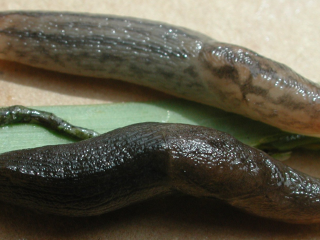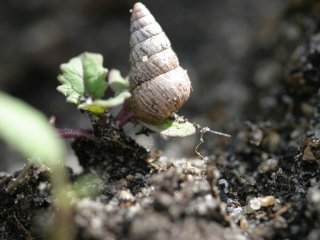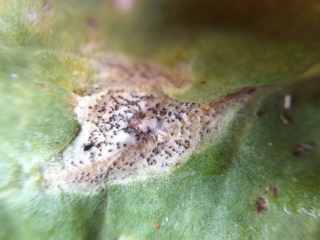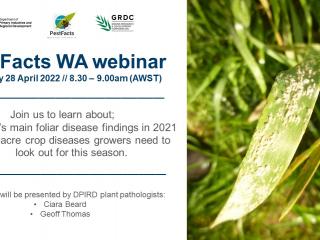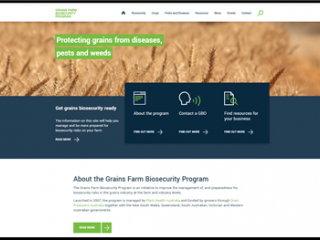What to expect from mollusc pests after a hot dry summer
A hot, dry summer doesn’t mean that there won’t be any slug or snail activity in paddocks this season. Don’t get caught out.
Slugs
Paddocks that have a history of slug activity and were not baited in 2021 are likely to have slugs present.
Reticulated slugs over summer, hide under surface refuges such as rocks, whereas the black keeled slugs will burrow underground. Both species of slugs will survive hot summers, but black keeled slugs will also survive in paddocks if burning occurred whilst slugs had burrowed underground.
Survey your paddocks and find out where your slugs are to target baits. The best time to survey for slugs is nine hours after sunset when temperatures are at 7oC and humidity is between 80-90%. As getting these conditions can be hard, create refuges for slugs by placing traps (such as wet hessian sacks) in paddocks, which can be checked the following morning. Or run a line of baits out one day and check for any dead slugs the following day.
One slug per square metre can cause extensive damage to germinating canola.
A well-timed baiting application can control slugs. Baiting after seeding can protect seedling crops from slug feeding damage.
Small conical snails
- South Stirlings
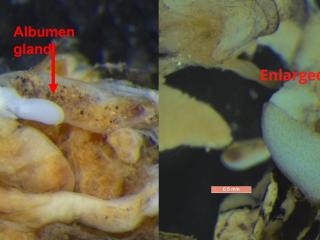
Recent dissections of small pointed (conical) snails from the South Stirlings have revealed that the albumen gland in snails collected from early March to late March has increased in size. Green plant material was also found in their guts indicating snails are actively feeding.
The albumen gland supplies the nutritive fluid required for egg production. This increase in gland size suggests that most of the snail population is expected to be laying eggs by mid-April.
There are three snail species that are pests of WA broadacre crops. For more information on how to diagnose snails refer to DPIRD’s Diagnosing snails in crops.
Eggs laid by snails this season will contribute to snail numbers next year.
Snail numbers should be monitored to determine if they exceed DPIRD’s suggested threshold numbers and if there is a need to carry out management methods.
Snails are usually found on stumps, fencelines and under stubbles, depending on the species of snail. Camera monitoring has shown that the best time to check is early in the morning, from 6am to 8am, when there is moisture on plants and stubble.
A good way to determine snail numbers on open ground is to use a 32x32cm square quadrant and count all of the live snails in it. This is an area of 10% of a square metre so multiplying by 10 will give an estimate of snails per square metre.
Trials conducted by Stirlings to Coast farmers has shown small conical snails are difficult to control with techniques such as cabling, speed tillering, stubble crunching that control round snails (white Italian, vineyard snail) are not effective on small conical snails. For more information refer to the Stirlings to Coast Farmers Trials Review Booklet 2020.
After sowing, baiting is the only control method for snails. Baiting before the crop emerges is more effective as snails randomly encounter baits. The less green plant material is present in the paddock the more likely it is that snails will encounter a bait.
Timing of baiting is important, to coincide with when snails are actively moving and feeding.
Snails can become active after a rain event of five mm or more. Rain has fallen in large parts of southern WA. Snails can also be actively moving even if there has not been rainfall during the day. For more information see DPIRD’s Time snail baiting to coincide with maximum snail movement and before snails lay eggs page.
An even spread of baits across paddocks increases the chance that slugs and snails will feed on them, reducing the need for re-baiting. DPIRD’s SnapBait app assists with calibrating bait spreaders. If unsure that snails are actively feeding consider baiting small patches and observe for any dead snails the day after.
It is also recommended that growers budget for more than one bait application. As a single application of baits may not be sufficient to control small conical snails. For more baiting information refer to the Stirlings to Coast Farmers Effective baiting options for the control of conical snails in the Albany port zone final technical report.
Research has also found that applying granular lime to a paddock with small conical snails increases shell strength and increase their fertility. Growers need to budget for baiting paddocks after liming has occurred. For more information see the GRDC Update Paper Determining the effect of lime on small pointed (conical) snail fecundity and shell strength.
For more information on slug and snail control visit:
- DPIRD’s Identification and control of pest slugs and snails for broadacre crops in WA page
- DPIRD’s Snail and slug control page
- DPIRD’s Managing snails in broadacre crops podcast
- GRDC’s Bash’Em Burn’Em Bait’Em: Integrated snail management in crops and pastures publication
- GRDC’s Autumn is the time to bait snails media release
- GRDC’s Snail baiting as part of an integrated pest management strategy video.
For more information contact Research scientist Svetlana Micic, Albany on +61 (0)8 9892 8591.
Article authors: Cindy Webster (DPIRD Narrogin) and Svetlana Micic (DPIRD Albany).
Meet our new team member – Dr Saleh Adnan
Welcome to the PestFacts WA team Dr Saleh Adnan!
Research entomologist Saleh will be providing broadacre insect identifications, extending integrated pest management information via our e-newsletter and assisting with other PestFacts WA service outputs.
In addition to working with the PestFacts WA team, Saleh works in other DPIRD Crop Protection projects conducting diamondback moth surveillance, investigating economic thresholds of native budworm in wheat and working in the iMapPESTS project with smart traps.
Saleh has a decade of experience in developing integrated pest management strategies for major insect pests of irrigated agricultural crops.
In his previous DPIRD role, Saleh worked as a Research scientist with the Horticulture and Irrigated Agriculture team in Kununurra. Saleh undertook several research projects on surveillance and bio-rational management of Fall armyworm. This included research on biological control, host plant range and drone image-based monitoring of fall armyworm damage in WA irrigated crops.
Prior to joining DPIRD, Saleh worked as a Postdoctoral Scientist at Macquarie University in NSW. During his postdoctoral tenure, he researched mass rearing, crop sanitation and pest monitoring, behavioural management, and sterile insect technique of major fruit flies affecting Australian agriculture industries. This was done in collaboration with NSW DPI, SARDI and CSIRO. Saleh earned his PhD and Master of Research in Biological sciences (majoring in entomology) at Macquarie University.
Saleh also worked as a lecturer in the Entomology Department at Bangladesh Agricultural University after completing his Bachelor of Agriculture degree and Master of Science in Entomology degree at that university.
Keep an eye out for Saleh on Twitter and Facebook where he enjoys engaging with the grains and horticultural industry discussing entomology topics.
Article author: Saleh Adnan (Northam).
Canola blackleg risk forecasts
DPIRD's blackleg spore maturity forecasts for Western Australia for the 2022 growing season have begun, and forecasts are available online. The latest forecast is current to 5 April 2022.
The forecasts show the expected risk during the 4-6 leaf stage, relative to the date of sowing. For crops sown in the late March to early April period, the risk of blackleg spore showers coinciding with the seedling susceptible stage are high for some areas in the Great Southern and south coast cropping areas. Growers in these areas should consider using the BlacklegCM decision support tool to determine if they should apply a foliar fungicide to their canola crops during the susceptible 4-6 leaf stage. BlacklegCM is available for download from the Apple App and Google Play stores. This app currently only works on tablets and is not available for phones. For more information refer to DPIRD’s Blackleg CM page.
For more information, refer to DPIRD’s Canola blackleg spore maturity forecast for Western Australia page to check the blackleg model forecast for your district.
For more information about blackleg in canola contact Research scientist Andrea Hills, Esperance on +61 (0)8 9083 1144 or Senior research scientist Ravjit Khangura, South Perth on +61 (0)8 9368 3374.
For more information about the blackleg risk forecast, or the BlacklegCM decision support tool, contact Senior research scientist Jean Galloway, Northam on +61 (0)8 9690 2172 or Senior research scientist, Adam Sparks, Perth on +61 (0)8 9368 3689.
Article authors: Janette Pratt (DPIRD Moora), Jean Galloway (DPIRD Northam) and Adam Sparks (DPIRD Perth).
Register now for the PestFacts WA Plant disease webinar
You are invited to register and attend our upcoming PestFacts WA Plant disease webinar.
Date: Thursday 28 April 2022
Time: 8.30 – 9.00am (AWST)
DPIRD plant pathologists Ciara Beard and Geoff Thomas will be discussing the following topics in this webinar:
- Findings of foliar disease surveillance activities in broadacre crops in 2021.
- Foliar disease risk outlook for WA broadacre crops this season.
There will be time for questions and discussion at the end of the webinar.
After registering you will receive a confirmation email containing information about joining the webinar.
Previous webinar recordings can now be viewed
The PestFacts WA webinar that was delivered on Friday 1 April 2022 can now be viewed on YouTube and the PowerPoint presentation can be downloaded from the About PestFacts WA page.
The recent Blackleg crown canker versus upper canopy infection webinar recording is also available for viewing on YouTube.
For more information on webinars contact PestFacts WA newsletter editor Cindy Webster, Narrogin on +61 (0)8 9881 0201.
Article author: Cindy Webster (DPIRD Narrogin).
Have you checked out the new Grains Farm Biosecurity website?
Launched last October by Plant Health Australia (PHA) in partnership with Grain Producers Australia (GPA) the Grains Farm Biosecurity website has been designed with grain growers in mind.
The easy-to-use website provides various fact sheets, videos, how-to guides, online training and strategies to prepare producers to manage on farm biosecurity risks.
Australia’s $18 billion grains industry generates more than 170 000 jobs and export grains to the value of $13.9 billion. With a high reliance on exports, maintaining market access through the implementation of good biosecurity practices is critically important to the grains industry.
Given our reliance on export markets and the zero market tolerance for live pests in grain, farm biosecurity should be top of mind for WA grain growers. The new website offers a suite of practical biosecurity management tools that make a big difference.
The industry-specific website provides:
- biosecurity best practices
- information about grain crops grown in Australia
- pest reporting guidance
- a pest and disease database
- industry news
- a list of field days and other industry events.
Establishing good biosecurity practices on farm is not only good for individual farm businesses but it also adds another layer of protection to Australia’s world-class biosecurity system.
Everyone has a role to play in protecting Australia against harmful pests and diseases, so if you spot anything unusual or find something you are unsure about, call the Exotic Plant Pest Hotline on 1800 084 881.
Visit the Grains Farm Biosecurity website for the latest grains biosecurity news and information.
For more information contact Research scientist and WA Grains biosecurity officer Jeff Russell, Northam on +61 (0)8 9690 2229.
Article author: Jeff Russell (DPIRD Northam).

